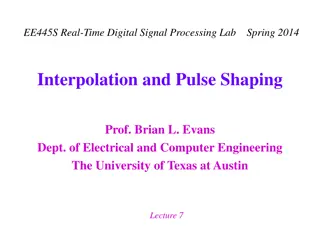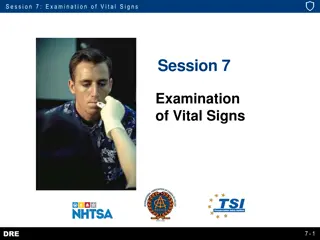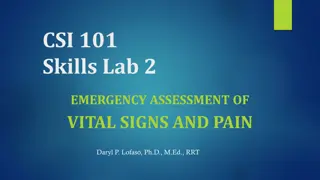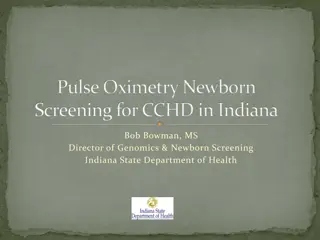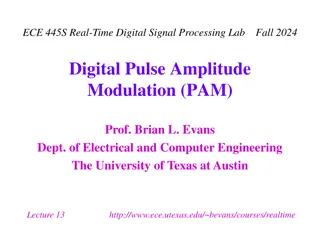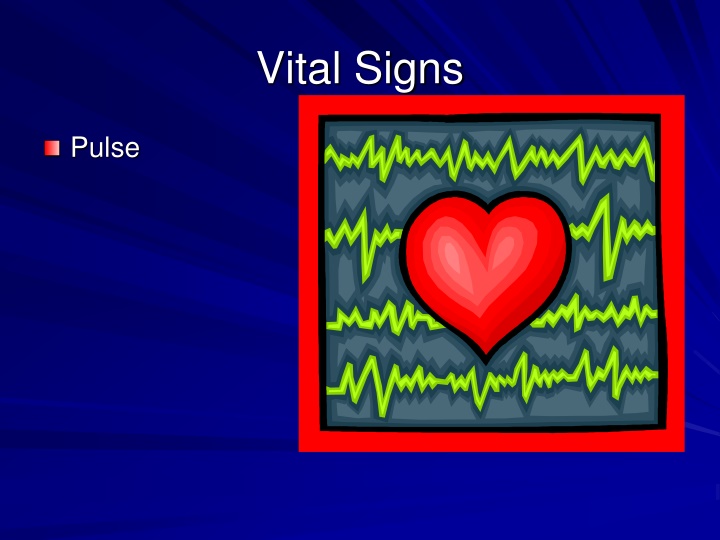
Understanding Pulse: A Comprehensive Guide
Explore the vital signs of pulse, factors affecting it, peripheral pulse sites, assessing the pulse, and more. Learn about different pulse sites, assessing apical pulse, rate, rhythm, and elasticity of the pulse. Enhance your knowledge about the cardiovascular system with detailed images and descriptions.
Download Presentation

Please find below an Image/Link to download the presentation.
The content on the website is provided AS IS for your information and personal use only. It may not be sold, licensed, or shared on other websites without obtaining consent from the author. If you encounter any issues during the download, it is possible that the publisher has removed the file from their server.
You are allowed to download the files provided on this website for personal or commercial use, subject to the condition that they are used lawfully. All files are the property of their respective owners.
The content on the website is provided AS IS for your information and personal use only. It may not be sold, licensed, or shared on other websites without obtaining consent from the author.
E N D
Presentation Transcript
Vital Signs Pulse
What is the Pulse? A blood wave created by contraction of the left ventricle
Compliance : Ability of the arteries to contract and expand. Cardiac output: the volume of the blood pumped in the arteries = SV X HR.
Factors affecting the pulse Age Gender Exercise Fever Medications Hypovolemia Stress Position changes Pathology
PERIPHERAL PULSE APICAL PULSE -infants and children up to 3 years of age -used once there is discrepancies with radial pulse -in conjunction w some medications such as Digoxin.
Pulse sites Temporal-when radial not accessible Carotid-cardiac arrest, circulation to the brain Apical Brachial-Bp, cardiac arrest in infants Radial- most common and accessible Femoral-cardiac arrest, infant and children, POVD Popliteal, POVD, Posterior tibial, Foot circulation Pedal (dorsalis pedis), foot circulation
Peripheral blood vessels Peripheral blood vessels Arteries in the arm Brachial Ulnar Radial Arteries in the leg Femoral Popliteal Posterior tibial Dorsalis Pedis
Assessing pulse Palpation (60 sec.) Middle three fingers Using stethoscope Doppler ultrasound Moderate pressure Aware of (medications, activity, position)
Assessing Apical pulse Explain procedure Privacy Supine, or sitting position Point of maximal impulse (PMI) 5th. Intercostal space MCL. Clean ear piece and diaphragm by antiseptic gel Warm diaphragm before use Assess for lub-dub
Assessing pulse Rate : tachycardia (100B/m), bradycardia (60B/m) Rhythm : dysrhythmia, arrhythmia (ECG) Volume : full bounding, weak, feeble, thready elasticity : straight, smooth, soft, pliable Pulse deficit : any discrepancy b/w apical- radial pulses.
Nursing Dx. Ineffective peripheral tissue perfusion r/to ..






